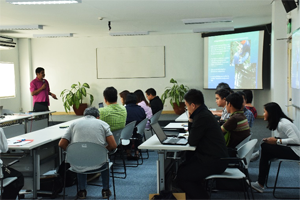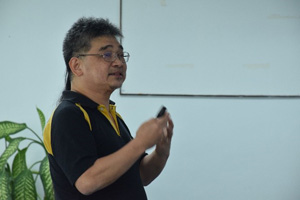 LOS BAÑOS, Laguna – Modern technologies, which are incorporated in two forestry programs are apt to generate information and knowledge.
LOS BAÑOS, Laguna – Modern technologies, which are incorporated in two forestry programs are apt to generate information and knowledge.
The technologies are seen to lead the development of science based solutions for the sustainable conservation and management of the country’s forest and biodiversity.
This develops as the Philippine Council for Agriculture, Aquatic, and Natural Resources Research and Development of the Department of Science and Technology (DOST-PCAARRD) evaluated the said programs recently.
Researchers from the University of the Philippines Los Baños (UPLB) and UP Diliman (UPD) gathered at DOST-PCAARRD Headquarters to present the status and accomplishments of their research programs.
The programs are titled: “Forest Canopy Observation, Positioning and Investigation (Forest CANOPI) Program: Developing Forest Canopy Science in the Philippines” and “From Genes to Ecosystems: Understanding Fruit Bat Species and Genetic Diversity and its Ecological Interactions with Plants in Tropical Lowland Forest, Palanan, Isabela.”
Both programs are under the Council’s Emerging Interdisciplinary Research (EIDR) Program funded by DOST.
 The Forest CANOPI Program focused on the physical characterization of the study site such as topography, vegetation, composition, soil characteristics, canopy photography, and mapping. It is headed by Dr. Nathaniel C. Bantayan of UPLB
The Forest CANOPI Program focused on the physical characterization of the study site such as topography, vegetation, composition, soil characteristics, canopy photography, and mapping. It is headed by Dr. Nathaniel C. Bantayan of UPLB
The “From Genes to Ecosystems” Program, headed by Dr. Perry S. Ong of UPD, on the other hand, highlighted a method in gathering pollen, fecal, and DNA samples of more than a thousand individual species of fruit bats.
Dr. Ong and his team also reported the use of technology and methods in determining fruit bat diversity as well as their community structure and population ecology.
“The techniques will allow for the characterization of their foraging areas, resulting to understanding the role of fruit bats in pollination and seed dispersal,” Ong said.
The team was able to characterize three habitat types for fruit bats, namely: mangrove forest, dipterocarp forest, and forest over ultramafic substrate.
